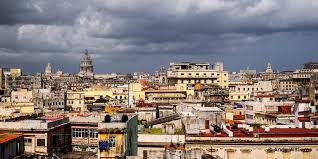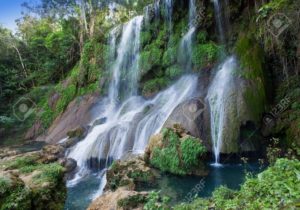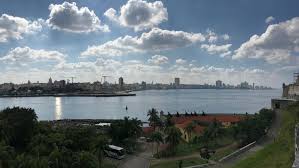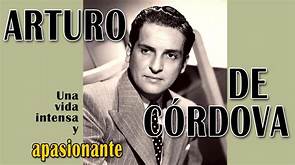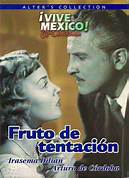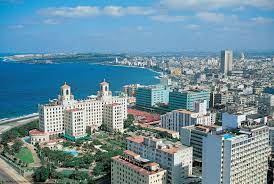CELIA CRUZ “LA REINA DE LA SALSA”, PIONERA EN LA EVOLUCION DE LA MUSICA LATINA. PHOTOS. VIDEOS
Úrsula Hilaria Celia de la Caridad Cruz Alfonso, conocida como Celia Cruz, fue una cantante cubanoamericana y una de las artistas latinas más populares del siglo XX. Cruz saltó a la fama en Cuba durante la década de 1950 como cantante de guarachas, ganándose el apodo de “La Guarachera de Cuba”. En las siguientes décadas, se hizo conocida internacionalmente como la “Reina de la Salsa” debido a sus contribuciones a la música latina.
Más que testigo de la evolución de la música latina en los Estados Unidos, ella fue la encarnación de la misma. Como pionera del crossover, siguió haciendo éxitos y abriendo camino como una persona mayor. Sobre todo, ella extendió alegría donde quiera que fuera. En homenaje en su proximo cumpleaños, algunas de sus canciones e interpretaciones seran eternas con el devenir de los años.
La carrera de Celia Cruz abarcó más de medio siglo cuando murió el 16 de julio de 2003, a la edad de 77 años. Su apodo popular, “la Reina de la Salsa”, era algo inapropiado; Cruz reinó no solo a partir de la estrella femenina de la escena musical de inmigrantes latinos de Nueva York de los años setenta, sino también como una artista esencial cuya voz transmitía tanto el sonido sagrado de la música afrocubana atemporal como el giro de la era de las grandes bandas prerrevolucionarias de Cuba.
VIDEO- Celia Cruz y Tito Puente en Vivo…
La estrella de Celia Cruz subió rápidamente al escenario y a la pantalla en Cuba después de que la joven cantante se uniera a La Sonora Matancera, una banda cuyos miembros incluían a su futuro esposo, Pedro Knight, en 1950. Aquí canta “Juancito Trucupey” en la televisión cubana en 1956.
“Guantanamera” se convirtió en un estándar del repertorio de Cruz después de que ella dejó Cuba para México en 1960, y posteriormente se mudó a los Estados Unidos. Su versión de la canción, basada en la poesía del ícono cubano José Martí y popularizada internacionalmente por Pete Seeger, fue lanzada en el álbum de 1967 Bravo Celia Cruz, grabado con La Sonora.
Cruz grabó por primera vez la rumba antirracista “Bemba Colora” para su álbum de 1966 Tico Records, Son Son Guaguanco.
La alquimia de Cruz con los músicos que llegaron a ser conocidos como Fania All-Stars durante sus conmovedores años de salsa en la década de 1970 en Nueva York resultó en una serie de álbumes importantes. Entre ellos está Celia & Johnny de 1974, con el cofundador de Fania, Johnny Pacheco, que comienza con el explosivo “Quimbara”.
Otra canción para siempre de Celia del álbum Celia & Johnny. Aquí Cruz canta “Toro Mata”, compuesto por el compositor peruano Caitro, en un especial de televisión panameño, después de una introducción fraternal dirigida a las amas de casa en la audiencia.
VIDEO= Celia Cruz y Oscar de Leon en Vivo…
Cruz dio testimonio de su infalible Sabor, calentando un estudio de televisión austero con una presentación del clásico de salsa “Cucula” en 1983.
Cruz y su esposo Pedro Knight descubrieron su romance duradero en este hermoso momento de 1999.
Cruz dio la bienvenida al nuevo siglo con la exitosa canción “La Negra Tiene Tumba”, la canción principal de su 59º álbum. Producida por Sergio George, la canción mostró la continua voluntad del cantante de adoptar nuevos sonidos en la víspera de la explosión del reggaetón. Parecía más fabulosa que nunca en el memorable video del director cubano Ernesto Fundora.
La canción final grabada por Celia resumió su entusiasmo por la vida. Fue lanzado con un video retrospectivo de momentos profesionales.
La versión de salsa de 2000 de Cruz de “I Will Survive” tiene un significado especial ahora. Especialmente desde que la canción fue lanzada como “Yo Vivere”, que se traduce del español como “I Will Live On”.
CELIA CRUZ “THE QUEEN OF SALSA”, PIONEER IN THE EVOLUTION OF LATIN MUSIC. PHOTOS. VIDEOS
Úrsula Hilaria Celia de la Caridad Cruz Alfonso, known as Celia Cruz, was a Cuban-American singer and one of the most popular Latin artists of the 20th century. Cruz herself rose to fame in Cuba during the 1950s as a guaracha singer, earning the nickname “La Guarachera de Cuba.” In the following decades, she became known internationally as the “Queen of Salsa” due to her contributions to Latin music.
More than a witness to the evolution of Latin music in the United States, she was the embodiment of it. As a pioneer of the crossover, she continued to make hits and break ground as an older person. Above all, she spread joy wherever she wanted it to go. In honor of her upcoming birthday, some of her songs and performances will be timeless over the years.
Celia Cruz’s career spanned more than half a century when she died on July 16, 2003, at the age of 77. Her popular nickname, “the Queen of Salsa,” was somewhat of a misnomer; Cruz reigned as not only the female star of New York’s Latin immigrant music scene of the 1970s but also as an essential artist whose voice conveyed both the hallowed sound of timeless Afro-Cuban music and the twist of the era of the great pre-revolutionary bands of Cuba.
The Celia Cruz star quickly rose to the stage and screen in Cuba after the young singer joined La Sonora Matancera, a band whose members included her future husband, Pedro Knight, in 1950. Here she sings “Juancito Trucupey” on Cuban television in 1956.
“Guantanamera” became a standard in Cruz’s repertoire after she left Cuba for Mexico in 1960, and subsequently moved to the United States. Her version of Ella’s song, based on the poetry of Cuban icon José Martí and popularized internationally by Pete Seeger, was released on the 1967 album Bravo Celia Cruz, recorded with La Sonora.
Cruz first recorded the anti-racist rumba “Bemba Colora” for his 1966 Tico Records album, Son Son Guaguanco.
Cruz’s alchemy with the musicians who came to be known as the Fania All-Stars during their soulful salsa years in 1970s New York resulted in a series of landmark albums. Among them is Celia & Johnny from 1974, with Fania co-founder Johnny Pacheco, beginning with the explosive “Quimbara”.
Another song forever by Celia from the Celia & Johnny album. Here Cruz sings “Toro Mata,” composed by Peruvian composer Caitro, in a Panamanian television special, after a brotherly introduction addressed to housewives in the audience.
Cruz testified to her infallible Sabor, heating up an austere television studio with a performance of the salsa classic “Cucula” in 1983.
Cruz and her husband Pedro Knight discovered her lasting romance in this beautiful moment in 1999.
Cruz welcomed the new century with the hit song “La Negra Tengo Tumba,” the title track from her 59th album. Produced by Sergio George, the song showcased the singer’s continued willingness to embrace new sounds on the eve of reggaeton’s explosion. She looked more fabulous than ever in Cuban director Ernesto Fundora’s memorable video.
The final song recorded by Celia summed up her enthusiasm for her life. It was released with a retrospective video of professional moments.
Cruz’s 2000 salsa version of “I Will Survive” has a special meaning now. Especially since the song was released as “Yo Vivere”, which translates from Spanish as “I Will Live On”.
Agencies/ Billboard/ Judy Cantor-Navas/ Internet Photos/ YouTube/ Arnoldo Varona/ www.TheCubanHistory.com
THE CUBAN HISTORY, HOLLYWOOD.




